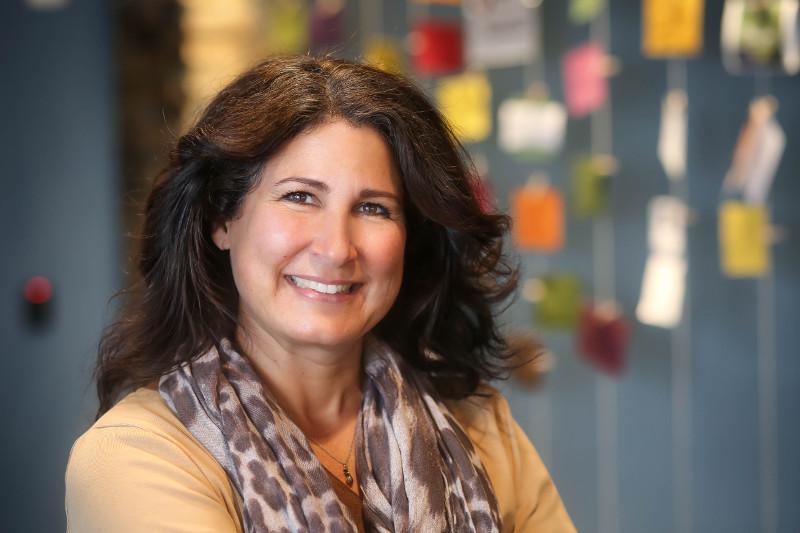By Greg Mischio
At our October AMA Madison luncheon, Jake Athey and Nina Brakel-Schutt of Widen presented on their Connectivity Research. While they shared their study’s findings, the true message Jake and Nina had for marketers was the value of proprietary research.
Widen is a digital asset management (DAM) provider located here in Madison, with over 600 customers. They hosted the event not only to share their Connectivity Research, but also to showcase their newly renovated space (they’ve also recently opened up an office in London).
I’ve seen Jake and Nina present many times, and have always been impressed with their approach to content marketing. These folks have been at it for years, and they are the textbook definition of how an internal team can make a resounding impact with inbound marketing. Their connectivity research was just the latest feather in their cap.
Why proprietary research?
One of the most critical components of any effective campaign is proprietary research. Conducting research can help uncover new truths about your target market, but it’s also an effective way for you to engage in content marketing.

Jake Athey
People love to share new research on social media, and more importantly, they love to link to it from their own content. So let’s first share some of the findings from Widen’s connectivity research, and then touch on how it’s helped Jake, Nina, and their team.
Why connectivity?
Connectivity can have many contexts in marketing. We can be connected to data, each other, and tools.
With all of our modern day technology, connecting has never been this easy. Yet, as Nina wrote in this post on Marketo: “Everyone and everything is connecting. But that doesn’t mean people feel connected or necessarily benefit from it. Why?”

Nina Brakel-Schutt
Widen’s goal was to answer Nina’s question, and more. As noted in their own post on the research, they wanted to learn:
- How marketers and creatives define “being connected”
- What they want from a connected community
- What challenges they face in connecting content
- Which tools they use to stay connected
Their research included a quantitative survey of 200 marketing creative and IT professionals. This was followed up with one-on-one interviews with 21 participants.
Key takeaways
In their presentation, Jake and Nina touched on a number of quantitative and qualitative findings. Some big takeaways include:
1. Collaborating is critical…and the best results occur in-person
53% of the survey respondents said the best way to achieve a feeling of connection at work is by collaborating with coworkers. And 76% say that the most successful collaboration happens in person.
You would think the results would be the opposite with the abundance of technologies that allow us to collaborate online from any place at any time. But Nina notes that sometimes we may be “too connected” and “can’t see things in a meaningful way.”
She shared a story from their one-on-one interviews. The marketing team from healthcare facility planners Erdman often go offsite to brainstorm ideas, cross-pollinate across teams, and dedicate time to being creative.
The practice has increased communication and empowered employees.
2. Marketers want an experience that “feels connected”
The amount of connectivity in the marketing space can make your head spin. Jake and Nina shared some graphics that illustrated the proliferation of marketing tools, and how truly overwhelming all the connectivity can be for a marketer.
The challenge for the marketer is to determine how all these tools converge and work within your process. This is your “MarTech stack,” and if there are too many technologies assembled, it’s difficult to get them to work well together.
Widen’s research indicated that 86% of participants prefer an experience that “feels connected” rather doing it all. Instead of one tool that “does it all,” the trend is to build your own stack of technology tools. Your respective tools should connect four key areas:
- Work process
- Customer experience
- Content
- Analytics
3. Beyond the customer: The benefits of proprietary research
The research Widen produced not only gave them profound insights into their own target market (marketers), it also accomplished a number of other goals — extending beyond customer intelligence. Widen’s research helped them:
- Boost thought leadership and build credibility
- Extend their reach and establish Widen as a thought leader in the industry
- Inform their products and services, helping their customers better connect
The research has fostered four live presentations, three webinars, and numerous blog posts (including the Marketo piece), and additional in-person presentations. That’s more exposure, credibility, and gravitas for Widen.
Nina also let the group know that the task might not be as Herculean as you think. Their own internal marketing team developed the survey (with the help of a freelance market researcher), and did the bulk of the legwork themselves.
It’s a perfect example of how research can help you in multiple ways. “Connectivity” in this case yielded insights on current customers, and established new connections as well. Conduct your own research — you might be the next one to present your findings to the AMA!
Greg Mischio is the Owner and Strategic Director of Winbound. Winbound provides an all-in-one content marketing and conversion optimization package specifically designed for small marketing departments. Check out their “Think Bigger” blog, filled with digital marketing wit and wisdom for small marketing departments. Twitter: @gregmischio

